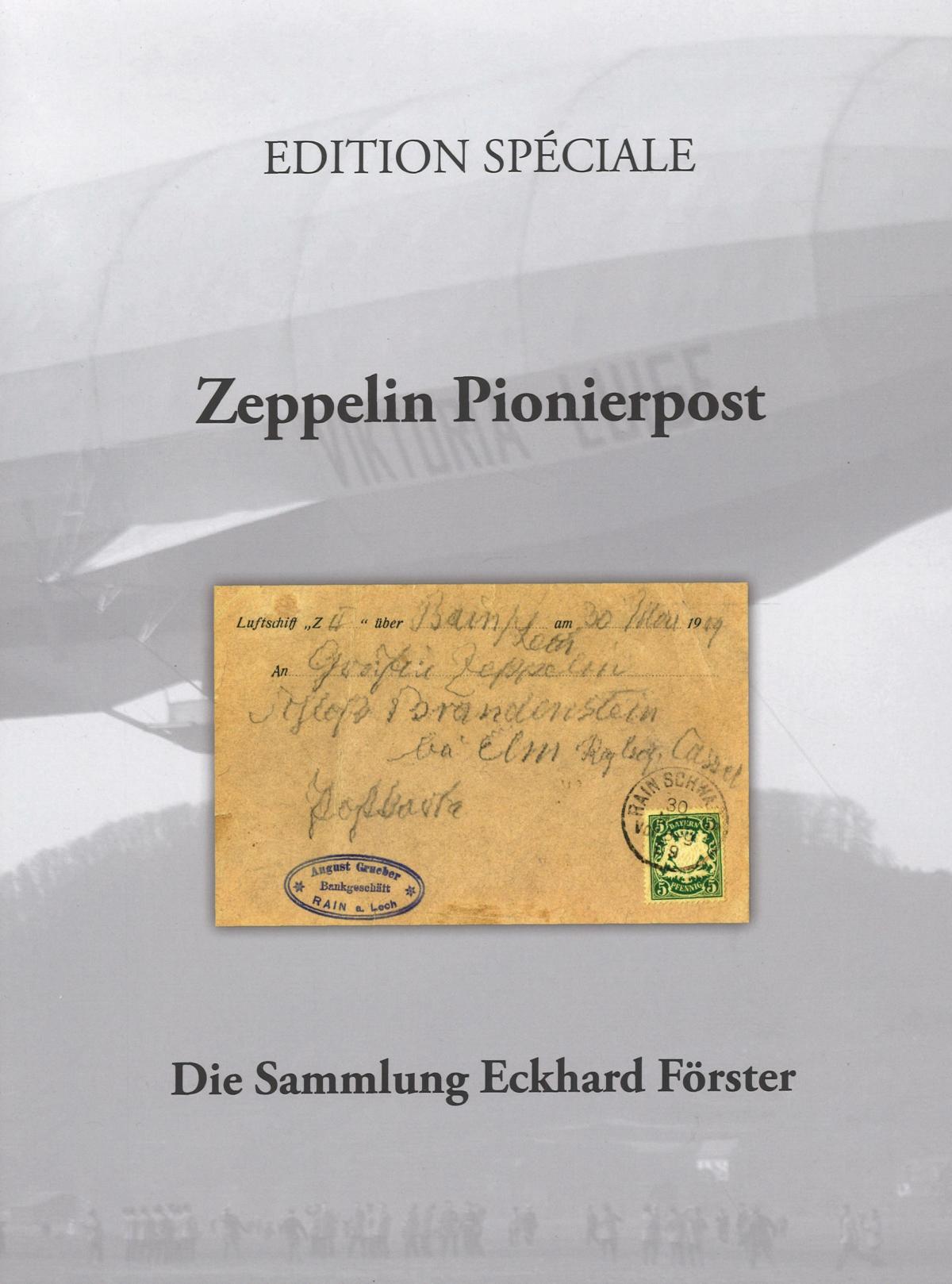No mail was dropped from LZ 1 and LZ 2, but from the flight from Switzerland by LZ4 on 1 July 1908 and from the great flight from Mainz on 4/5 August 1908, which ended in the disaster of Echterdingen. The collection extensively documents these early beginnings in 1908/1909, following the dropping maps and records of LZ 3 to LZ 6, which played an important role in determining location until the introduction of on-board radio in zeppelins in 1910, although – like those of LZ 5 and 6 – they are extremely rare.
A very large part of the collection is made up of the zeppelin and advertising cards sold on board the airships during commercial passenger flights by DELAG from 1910. 1911 saw the first on-board postmarks, a phase that came to an end with the outbreak of the First World War on 1 August 1914.
From 1914 to 1918, almost 100 additional zeppelins were used for military purposes, the rare, because not allowed, airdrop mail Förster documented on more than 20 pages. The last twelve pages of the collection are reserved for the LZ 120 and its mail, because this zeppelin was to be used for the Friedrichshafen – Berlin – Friedrichshafen scheduled service from 1919, but the Allies prohibited this and demanded the delivery of the airship. This ended the pioneering days of airships. The zenith of airship travel was only reached in the 1930s with the transatlantic flights of the Graf Zeppelin and the Hindenburg.
Key data: size 25.5 x 34 cm, 132 pages, in colour, hardback with embossed title and spine, dust jacket. Issued in 2024 by the Global Philatelic Network. Price: €79 plus postage. Available from: Heinrich Köhler Auktionshaus GmbH & Co. KG, Hasengartenstr. 25, 65189 Wiesbaden, Germany, tel. +49 (0)611 34 14 90, email: info@heinrich-koehler.de, www.heinrich-koehler.de
Translated with DeepL (www.deepl.com)


